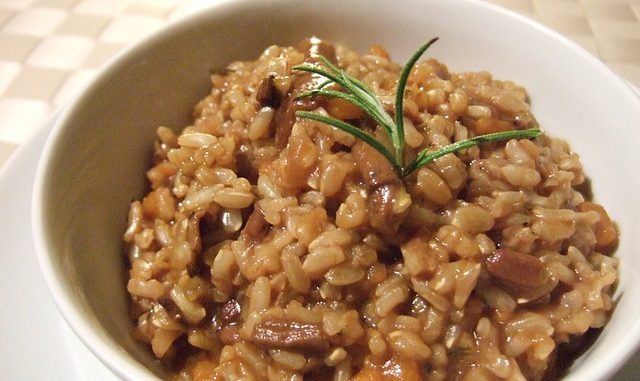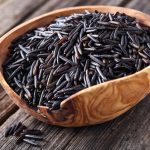
A risotto is one of the sublime dishes to come out of Italy. One of the key ingredients is rice but not any ordinary rice. It needs to be something with a high starch content which can retain water, remain firm but allow starch release to create the creaminess that characterises all risottos.
So, we discuss here the different types of Italian rice available for this incredible dish. All the rice varieties used in Italian cooking are white with an extended pearlescent core which becomes apparent when fried.
To create a risotto, the rice grains are massaged in the pan to release their starch content which creates the creaminess we expect. To improve release, the rice grains are first fried in butter and stirred so that they become semi-translucent. The rice is cooked when we can sense the grains are tender on the outside but retain a good bite in their centre.
Arborio Rice
Arborio rice is an Italian short-grained rice. The rice derives its name from the town of Arborio which resides in the Po Valley in northern Italy – a major rice growing area. This part of Italy is now the main site for its production but it is also widely grown in the USA, especially the hot states of Arkansas, Missouri and California.
Unlike long-grained rice, when cooked, the rounded grains retain their firmness. They are much shorter and plumper than any other rice variety known.
The amylopectin starch content of Arborio rice is higher than other varieties and allows it to have a creamy, slightly chewy consistency when cooked. Some woruld describe the centre of the rice grain as chalky. The high starch value means it blends well with other flavours. Rice pudding is a firm favourite for those seeking dessert forms for this rice.
Other varieties popularly used are Carnaroli, Baldo, Maratelli and Vialone Nano rice which also make ideal risottos.
Carnaroli Rice
Carnaroli rice is a medium-grained rice grown in the Pavia, Novara and Vercelli provinces of northern Italy. The rice is often found in many types of Italian cuisine and not just risotto.
It has an even higher starch content and firmer texture than Arborio rice as well as being a longer grain. The rice keeps its shape better than other types of rice which makes especially suited to longer cooking times as in risotto. It does so because the starch has a high amylose content. It can absorb water far more readily. The rice was developed in 1945 as cross between Vialone Nano and Lencino.
Vialone Nano
Vialone nano rice is one of the semifino or medium-grain rice types. It is grown in the flat, ricegrowing areas of the sothern Provincia di Verona or Bassa Veronese, “Veronese lowlands”, in Veneto. It too has a high amylose content similar to Carnaroli rice.
The rice was first developed and grown in 1937. It is a cross between Vialone rice with one called nano because this last variety has a short height. The rice acquired the IGP designation (a protected geographical indication) in 1996.
Cooked rice should be refrigerated between 4°C and 8°C and eaten within 48 hours.
Nutrition
| Typical Values | 100g contains | 75g contains |
| Energy | 1473.40kJ(347.00kcal) | 1105.05kJ(260.25kcal) |
| Fat | 0.60g | 0.45g |
| Saturates | 0.20g | 0.15g |
| Carbohydrate | 77.20g | 57.90g |
| Sugars | 0.70g | 0.53g |
| Fibre | 1.20g | 0.90g |
| Protein | 7.60g | 5.70g |
| Salt | 0.00 | 0.00g |
| *Reference intake of an average adult (8400 kJ / 2000 kcal) | – | – |
Products
This article contains links to our affiliate marketing partner Amazon. Please read our affiliate disclosure.

Leave a Reply